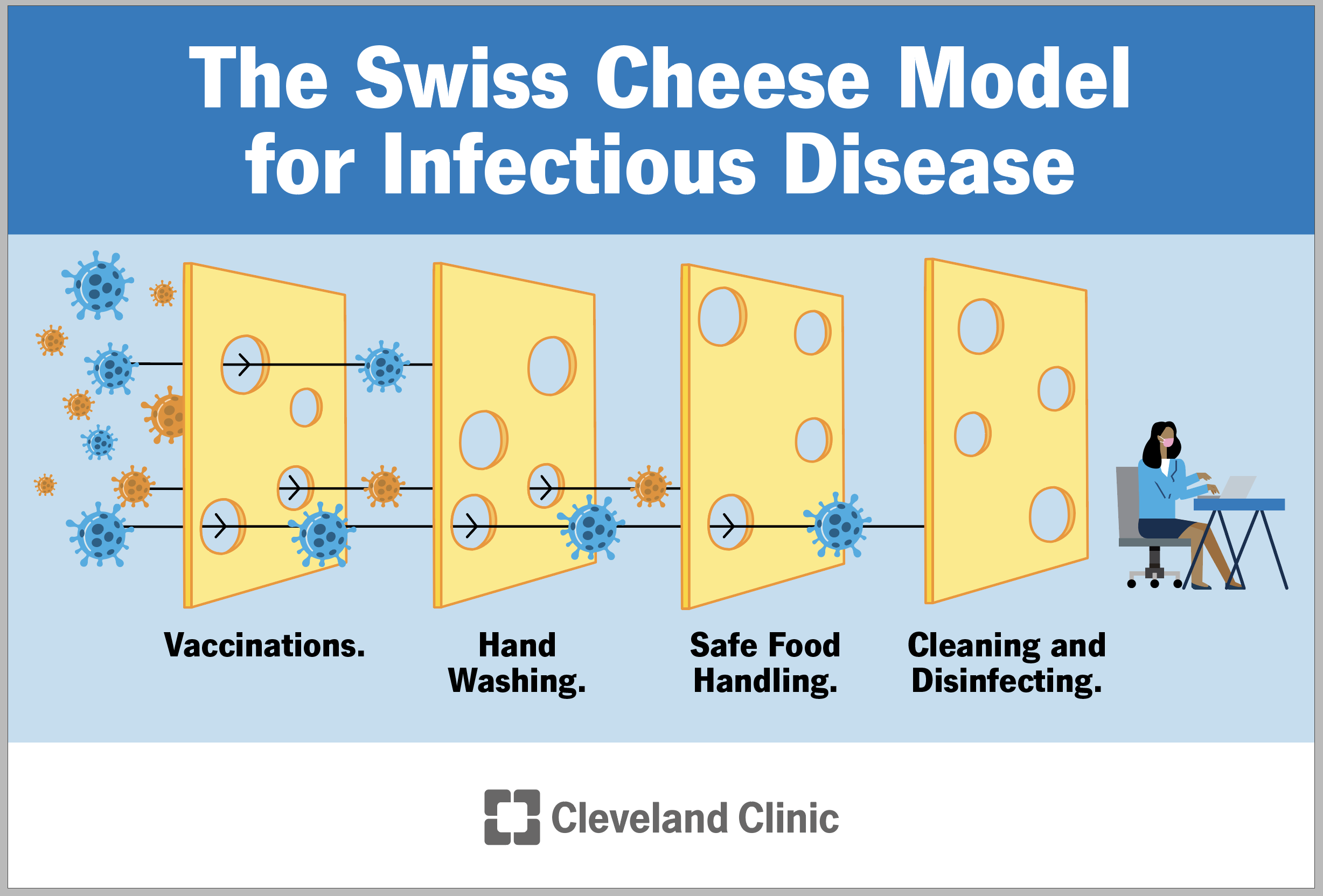Infectious diseases are illnesses caused by harmful germs (pathogens) that get into your body. The most common causes are viruses, bacteria, fungi and parasites. Infectious diseases usually spread from person to person, through contaminated food or water and through bug bites.
Advertisement
Cleveland Clinic is a non-profit academic medical center. Advertising on our site helps support our mission. We do not endorse non-Cleveland Clinic products or services. Policy
Infectious diseases are illnesses caused by harmful organisms (pathogens or germs) that get into your body from the outside. Germs that cause infectious diseases include viruses, bacteria, fungi, parasites and, rarely, prions.
Advertisement
Cleveland Clinic is a non-profit academic medical center. Advertising on our site helps support our mission. We do not endorse non-Cleveland Clinic products or services. Policy
We all get infectious diseases. You can get them from breathing in germs (like after someone coughs or sneezes), from bug bites, from contaminated food and from the environment around you. Respiratory infections (like colds, flu and COVID), stomach flu, STIs and even foot fungus are all examples of infectious diseases.
By comparison, noninfectious diseases aren’t caused by germs, but by genetics, anatomical differences or getting older. You can’t get noninfectious diseases from other people, a bug bite or your food. Cancer, diabetes, congestive heart failure and Alzheimer’s disease are all examples of noninfectious diseases.
Types of infectious diseases include:
Advertisement
There are hundreds of infectious diseases. Some common ones include:
These affect millions of people across the world each year.
Symptoms of infectious diseases depend on the type of illness. Fungal infections usually cause symptoms in specific areas of your body, like a rash and itching. Viral and bacterial infections can have symptoms in many areas of your body, like:
Germs cause infectious diseases. Your mouth, your nose and cuts in your skin are common places for germs to enter your body. Types of germs include:
You may develop symptoms when the germs damage or destroy cells and when your immune system responds to the infection.
Different infections spread in different ways, including:
Anyone can get an infectious disease. You may be at an increased risk if you:
Kids under 5 are also at higher risk. This is because their immune systems aren’t fully developed yet.
You can recover from many infectious diseases without getting seriously ill. But sometimes, they can cause complications. Some serious complications include:
Some viruses can lead to certain types of cancers, like liver cancer and cervical cancer.
Healthcare providers usually diagnose infectious diseases based on your symptoms, lab tests and, sometimes, imaging. Your provider can look for signs of disease by:
Treatment depends on the cause of the infection. Sometimes, your healthcare provider will recommend monitoring your symptoms rather than taking medication. Treatments could include:
Advertisement
There are no treatments for prion diseases.
See a healthcare provider if you have symptoms of an infectious disease, especially if they don’t get better within a week or two. If you have an ongoing infection, frequent follow-ups with your provider can help ensure your condition doesn’t worsen.
You should also talk to your provider if you plan to travel outside of the country you live in. They may recommend ways to avoid infections that are more common at your destination. Or if you’ve recently traveled and have symptoms, it can help them know if there are additional diseases they should test for.

There’s often no single way that’s 100% effective at preventing infectious diseases. But there are many simple habits that can help reduce your risk of an infection. You can think of it as lining up slices of Swiss cheese, a model suggested by James Reason, PhD. Where some slices have holes, other slices give protection. You can add to your layers of protection by:
Advertisement
Emerging infectious diseases are ones that are new or infecting more people than they had before. Special research is dedicated to these diseases.
Advertisement
Babies and children can be more likely to get sick from infectious diseases because their immune systems are still developing. They also can’t practice good hygiene on their own like adults can. Some infectious diseases that are more common in children include:
We live around viruses, bacteria, fungi and parasites every day. In fact, you have 10 times more bacteria inside your body than human cells — we couldn’t live without them! But some of the tiny organisms that share our world can be harmful.
Fortunately, there are many simple things you can do to keep yourself — and others — healthy. Washing your hands, covering your mouth when you cough or sneeze, and other simple habits can help protect your loved ones and neighbors from getting seriously ill. A small habit for you could be lifesaving for someone else.
Have a virus, fungus or bacteria? Some of these “bugs” won’t go away on their own. Cleveland Clinic’s infectious disease experts are here to help.

Last reviewed on 05/16/2025.
Learn more about the Health Library and our editorial process.